Losing a limb is more than a physical change. It brings new challenges for the body and the mind. One of the biggest struggles after limb loss is keeping the remaining muscles healthy and strong. When muscles are not used as much, they begin to shrink and weaken. This is called muscle atrophy, and it can make recovery even harder.
Electrical Muscle Stimulation, or EMS, offers a powerful way to fight this problem. By sending gentle signals through the skin to the muscles, EMS makes them contract as if they were moving naturally. This simple method helps prevent muscle loss, supports healing, and prepares the body for prosthetic use.
In this article, we will explore why muscle atrophy happens after limb loss, how EMS works to reduce it, and the real difference it can make in recovery. We will also share practical tips for using EMS safely and effectively, along with insights into how it fits into long-term rehabilitation.
Understanding Muscle Atrophy After Limb Loss
Why Muscles Begin to Shrink
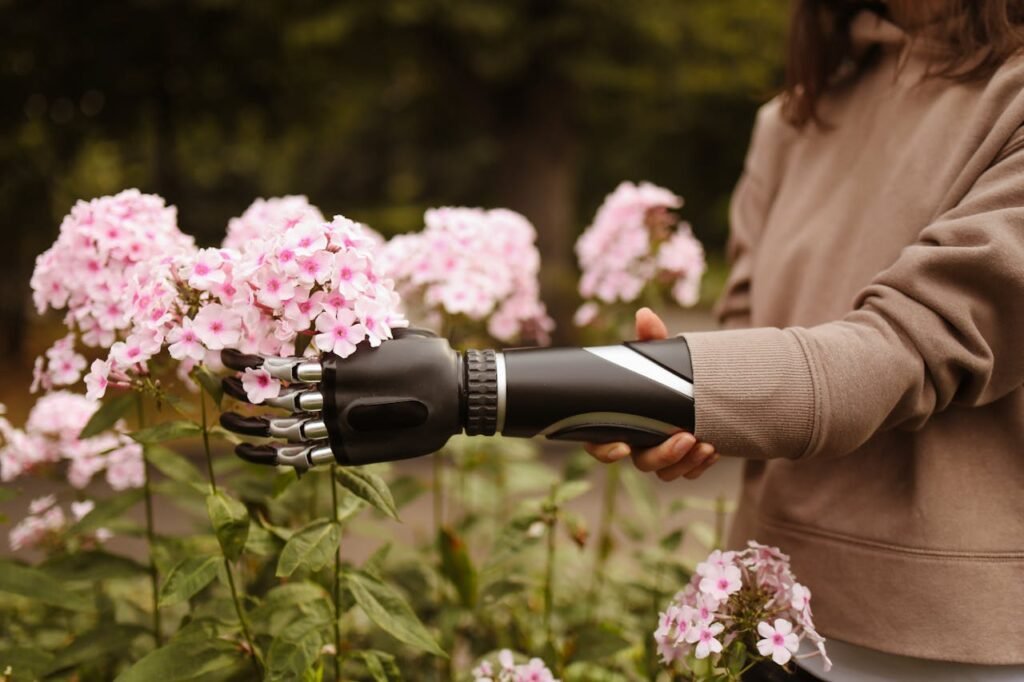
After an amputation, the muscles around the residual limb are not used in the same way as before. Without daily activity, they stop receiving the regular stimulation that keeps them strong. Over time, they begin to shrink, lose firmness, and weaken. This natural process is called muscle atrophy.
The Role of Nerve Signals
Muscles rely on nerve signals from the brain to stay active. When a limb is lost, some of these signals are disrupted or reduced. This makes it harder for the brain to send clear commands to the muscles in the residual limb. As a result, the muscles weaken faster, even if the patient wants to keep them active.
How Atrophy Affects Daily Life
Muscle loss is not just about appearance. Weak muscles mean less control, lower strength, and more fatigue. Tasks that once felt simple, like holding an object or balancing while standing, can suddenly feel difficult. Over time, this weakness makes it harder to adapt to a prosthetic limb.
Emotional Impact of Muscle Loss
Beyond the physical effects, muscle atrophy can take a toll on the mind. Many amputees feel discouraged when they notice their muscles shrinking. The loss of strength can create frustration and lower confidence, making rehabilitation feel like an uphill battle. This emotional strain often slows down recovery.
Why Muscle Health Matters in Recovery
Building a Strong Foundation for Prosthetic Use
A prosthetic limb is only as effective as the muscles that control it. Strong, responsive muscles make prosthetic training smoother and more natural. If the muscles are too weak, the prosthetic feels heavy, awkward, and difficult to use.
Maintaining Balance and Posture
Muscles in the residual limb help with more than just movement. They also play a role in balance and posture. When these muscles weaken, the body starts to rely too much on the other side. This imbalance can cause strain, discomfort, and even injury to the non-affected limb.
Supporting Circulation and Healing
Active muscles improve blood circulation, which helps with healing after surgery. When muscles contract, they push blood through the tissues, carrying oxygen and nutrients that support recovery. If muscles are left inactive, circulation slows, and healing can be delayed.
Protecting Mental Well-Being
Maintaining muscle strength also supports mental health. Each step of progress — like feeling the limb stronger or noticing better control — boosts confidence and motivation. Patients who can see and feel improvement are more likely to stay committed to their recovery journey.
How EMS Helps Fight Muscle Atrophy
What EMS Really Does
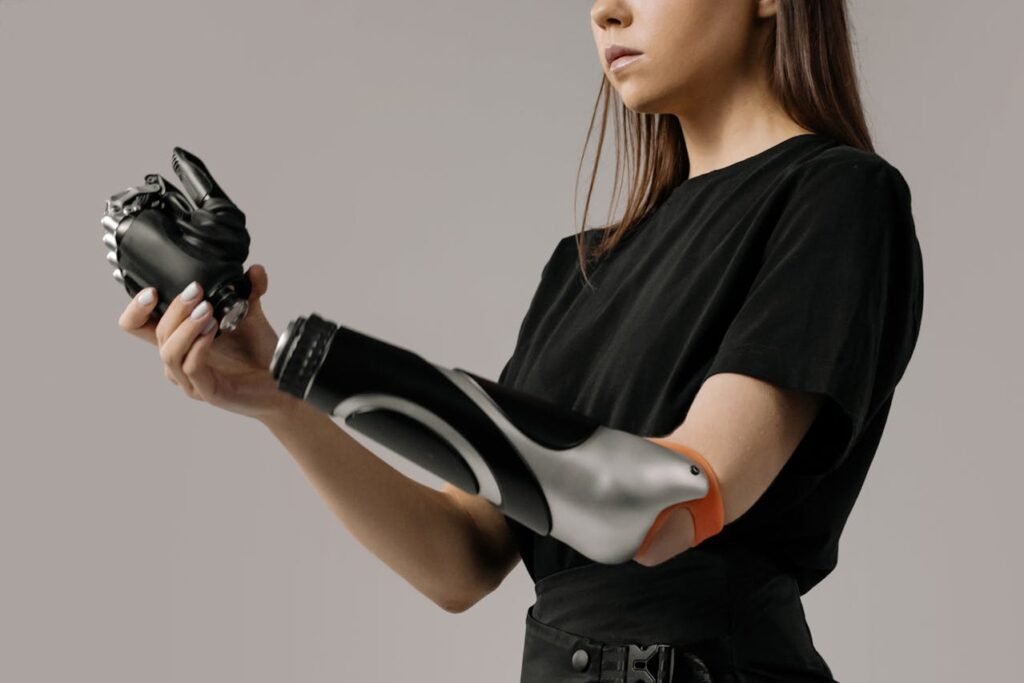
Electrical Muscle Stimulation, or EMS, sends small electrical signals through the skin into the muscles. These signals are very similar to the natural impulses our brain sends when we move. When the EMS device delivers these pulses, the muscles contract and relax, almost as if the person was moving them on their own. This process keeps the muscles active even when voluntary control is weak.
Replacing Lost Activity
After an amputation, muscles no longer receive the same workload they once did. They are used less often, and this lack of movement is what triggers atrophy. EMS provides a way to replace this missing activity. Even if the patient cannot move the muscles strongly by themselves, EMS keeps them contracting. These contractions are enough to stop muscles from shrinking and losing strength too quickly.
Improving Nerve Communication
Muscles and nerves are partners. When EMS contracts a muscle, the connected nerves also send signals back to the brain. Over time, this keeps the brain engaged with the residual limb, reminding it that the muscles are still alive and working. This is especially helpful for amputees who plan to use a myoelectric prosthetic, since those devices rely on clear nerve signals to function properly.
Strengthening Without Strain
One of the biggest benefits of EMS is that it allows training without heavy effort. Many amputees struggle to perform long or repetitive exercises, especially in the early weeks after surgery. EMS steps in to do the work for them. It gently contracts the muscle, building tone and strength without putting unnecessary stress on the patient. This makes it a safe option even for those with limited energy or pain.
Boosting Blood Flow
When muscles contract, they act like small pumps that move blood through the body. EMS makes this process more active. The rhythmic contractions created by the device push blood through the residual limb, improving circulation. This brings oxygen and nutrients to the tissues and speeds up healing. It also helps reduce swelling, which is a common issue after amputation.
Reducing Phantom Pain
Many amputees experience phantom limb sensations — feelings of pain or discomfort in the part of the body that is no longer there. EMS helps reduce these sensations by giving the brain real, tangible feedback from the muscles that remain. When the brain receives signals from active muscles, it becomes less likely to generate false pain signals. This makes EMS not only a physical tool but also a supportive therapy for comfort and relief.
Preparing for Prosthetic Use
For amputees who want to use a prosthetic limb, EMS creates a strong foundation. By keeping muscles active and nerves engaged, it ensures that when the prosthetic is fitted, the body is ready. Stronger muscles provide clearer signals, which makes learning to control the prosthetic smoother and less frustrating. Without this preparation, the transition can feel slow and difficult, which often discourages patients.
Why EMS Works Better Than Exercise Alone
Overcoming Fatigue
Traditional exercises are powerful, but they depend on the patient’s effort. Fatigue, pain, or low motivation can make it hard to complete enough repetitions to see results. EMS helps overcome this problem. The device does the contracting for the patient, allowing them to gain benefits even when energy is low.
Consistency in Training
With exercise alone, results depend heavily on how regularly the patient trains. Some days they may not feel able to do enough. EMS brings consistency, since sessions can be done daily with little strain. This regular stimulation prevents gaps in training, which is critical to stop atrophy.
Gentle Progression
Exercise can sometimes be too intense for weakened muscles, leading to soreness or strain. EMS allows a gentler approach. Patients can start with low-frequency, low-intensity sessions and slowly increase as their muscles become stronger. This prevents setbacks while still ensuring progress.
Working in Daily Life
Unlike exercise, EMS can fit into daily routines easily. Patients can use it while reading, relaxing, or even watching television. This makes it less of a burden and more of a natural part of life. Over time, this convenience makes it much easier to stick with, which is the real key to lasting results.
Practical Benefits of EMS for Amputees
Preserving Muscle Strength
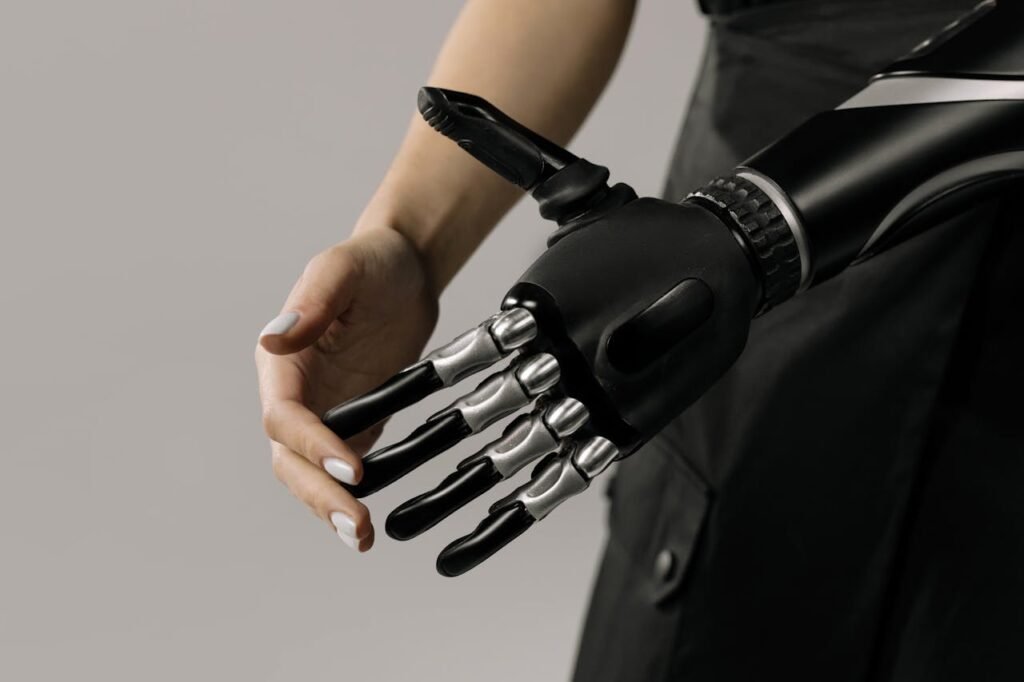
One of the most immediate benefits of EMS is the way it preserves strength. After limb loss, the unused muscles in the residual limb weaken quickly. This weakness makes even small movements feel heavy and tiring. EMS steps in to keep the muscles alive and working, even when the patient cannot use them fully. Over weeks of regular stimulation, patients notice that their limb feels firmer, more responsive, and easier to control. This preservation of strength forms the foundation for everything that follows in recovery.
Supporting Faster Healing
The period right after surgery is crucial for healing. Good circulation ensures that wounds close properly and tissues repair themselves. But when muscles remain inactive, circulation slows down. EMS restores this natural rhythm by contracting the muscles and pumping blood through the residual limb. This means more oxygen and nutrients reach the healing tissues, which speeds recovery and reduces the risk of swelling or infection. For many amputees, this early support makes the difference between a smooth recovery and a longer, more difficult one.
Reducing Phantom Sensations
Phantom sensations are one of the most puzzling parts of limb loss. The brain still thinks the missing limb is there, creating feelings of movement or pain that can be frustrating. EMS reduces these sensations by grounding the nervous system in real activity. When the brain feels the contractions of real muscles, it becomes less likely to generate false signals. Many patients report that regular EMS sessions make their phantom pain less frequent, less intense, and easier to manage.
Building Endurance for Everyday Life
Strength alone is not enough for daily living — endurance is equally important. Activities like cooking, typing, or even holding a prosthetic for several hours require muscles that can keep working without tiring quickly. EMS builds this endurance by training muscles to contract repeatedly, just as they would during daily tasks. Over time, this improves stamina, making ordinary routines easier and less exhausting. Patients often find themselves able to do more, for longer, without feeling worn out.
Preparing for Prosthetic Training
For many amputees, the ultimate goal is to use a prosthetic confidently. But without strong muscles, prosthetic training can feel like a constant struggle. EMS prepares the body for this challenge. By keeping residual muscles active and nerves engaged, it ensures the signals that control a prosthetic are strong and clear. This makes the early stages of prosthetic use smoother, less frustrating, and far more successful. In fact, patients who use EMS before being fitted often adapt more quickly and feel more confident from the start.
Improving Balance and Posture
After losing a limb, the body often shifts its weight to the non-affected side. This creates imbalance, strain, and sometimes pain in other muscles and joints. By strengthening the residual limb, EMS helps restore balance. Active muscles on both sides of the body support better posture, reducing the risk of long-term problems in the shoulders, back, or hips. Over time, this balance makes daily activities more comfortable and reduces the need for constant adjustments.
Offering Comfort and Relief
EMS is not only about strength and recovery — it also brings comfort. The rhythmic contractions created by the device often feel like a gentle massage, relieving stiffness and tension. For many amputees, using EMS at the end of the day becomes a way to relax, release muscle tightness, and sleep better. This comfort is just as important as the physical benefits, since recovery is as much about feeling good as it is about regaining strength.
Boosting Emotional Confidence
Recovery after limb loss is as emotional as it is physical. Watching muscles weaken can feel discouraging, as if the body is slipping further away from control. EMS provides visible proof of progress. Seeing and feeling the muscles contract, even with help, gives patients hope and reassurance. Each session feels like a small step forward, building confidence and motivation to keep going. This emotional strength is often the hidden benefit of EMS — it keeps the spirit strong while the body heals.
Integrating EMS Into Daily Recovery
Starting Small and Building Comfort
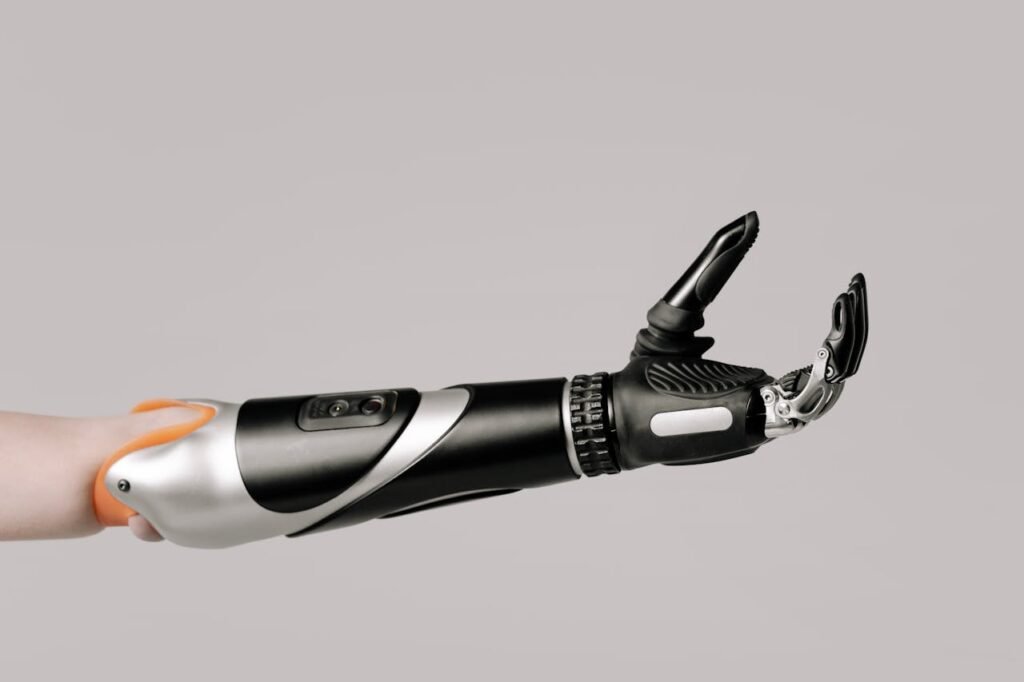
For someone new to EMS, the first goal is not strength but comfort. Sessions can begin as short as 10 minutes with low intensity. This gives the patient time to get used to the tingling and contractions without feeling overwhelmed. As confidence grows, sessions can be slowly extended. This gentle start helps prevent soreness and builds trust in the process.
Finding the Right Placement
Where the electrodes are placed makes a big difference. Each muscle responds differently, and correct positioning ensures the right areas are activated. A therapist often helps at the beginning, showing the patient how to place the pads correctly. Once learned, it becomes a simple part of the routine. Accurate placement is important not just for results but also for comfort, since poor placement can feel awkward or less effective.
Choosing a Time That Fits Daily Life
Consistency is what makes EMS powerful. The best results come when it becomes a part of daily life. Some patients prefer using it in the morning to “wake up” their muscles, while others use it in the evening to relax and reduce stiffness. EMS does not demand total focus, so it can be used while reading, listening to music, or watching television. The key is finding a regular time that feels natural, making the habit easy to maintain.
Combining EMS With Gentle Exercises
While EMS works on its own, it becomes even more effective when combined with simple exercises. After an EMS session, muscles are already activated and warmed up. This is the perfect time to practice small movements, such as lifting light objects or stretching. These voluntary efforts, paired with the contractions from EMS, create stronger nerve connections and prepare the muscles for real-life use.
Progressing Gradually Over Weeks
Recovery is not a race. The settings on the EMS device should be adjusted slowly, with frequency and intensity increased step by step. In the beginning, the goal is gentle activation. Later, the focus shifts to building endurance and strength. Keeping a simple log of session times, settings, and how the limb feels afterward helps track progress. Over time, this record shows how far the patient has come and helps adjust the program safely.
Making EMS Part of Daily Habits
The best routines are the ones that don’t feel like chores. Many patients find success when they attach EMS use to something they already do daily — like their morning tea, their favorite show, or bedtime reading. By linking it to an existing habit, EMS becomes automatic. What starts as a rehabilitation tool slowly becomes a normal, easy part of life.
Safety and Listening to the Body
Like all therapies, EMS works best when used with care. The contractions should never feel painful. If there is sharp discomfort or unusual soreness, the intensity should be lowered, or the session paused. It’s also important to avoid using EMS on broken or irritated skin. Hydration matters too — well-hydrated muscles respond better to electrical signals. Listening to the body ensures EMS stays safe and supportive in the long run.
Combining EMS With Other Rehabilitation Methods
Why Combination Works Best

No single therapy can address all the challenges of recovery after limb loss. Muscles, nerves, circulation, and even the mind all need attention. EMS keeps muscles alive and active, but it cannot teach movement patterns or rebuild everyday skills on its own. When paired with physiotherapy, occupational therapy, and other approaches, the results multiply. Patients heal faster, feel stronger, and adapt more smoothly to prosthetic training.
EMS and Physiotherapy
Physiotherapy is the backbone of most recovery programs. It focuses on teaching safe movement, building balance, and regaining strength across the body. EMS adds value here by preparing the muscles before a session. When EMS has already activated the residual limb, physiotherapy exercises feel smoother and less tiring. For example, stretching becomes easier, and movements like reaching or lifting can be performed with more control. Over time, EMS and physiotherapy together create stronger muscles and healthier movement patterns.
EMS and Occupational Therapy
While physiotherapy trains the body, occupational therapy focuses on daily living. This means practicing tasks like writing, eating, or buttoning a shirt. EMS supports this process by ensuring the muscles are strong enough to participate. For instance, after an EMS session, a patient might practice holding utensils or turning pages. The stimulation primes the muscles, making them more responsive during these tasks. This combination shortens the time it takes to move from simple exercise to real independence.
EMS and Mirror Therapy
One of the biggest challenges after limb loss is retraining the brain. The brain often struggles to adjust, leading to phantom sensations and weaker muscle control. Mirror therapy helps by tricking the brain into seeing the missing limb as if it were still there. When EMS is added, the effect becomes even stronger. The brain not only sees the limb moving in the mirror but also feels the real contractions in the residual muscles. This double input creates a powerful learning signal, reducing phantom pain and improving muscle control at the same time.
EMS With Resistance and Strength Tools
Simple resistance tools like therapy putty, elastic bands, or small weights are often part of rehabilitation. EMS enhances these tools by pre-activating the muscles. For example, squeezing therapy putty while EMS contracts the same muscle builds strength faster and with more precision. This dual effort deepens the connection between voluntary effort and muscle response. Over weeks, this leads to better endurance and smoother control, which is essential for tasks that require fine movement.
EMS and Sensory Re-education
After amputation, many patients struggle with sensory changes. Some feel numbness, while others develop sensitivity to touch. Sensory re-education involves retraining the brain to interpret touch and pressure accurately. Adding EMS during these sessions provides extra stimulation. The combination of electrical contractions and external touch teaches the brain to integrate multiple signals, which improves coordination and helps the patient rely less on vision when using a prosthetic.
EMS and Breathing Techniques
Recovery can feel overwhelming, and tension often slows progress. Relaxation techniques, like deep breathing, reduce stress and improve focus. When practiced during EMS sessions, breathing makes the contractions feel smoother and more natural. Patients report feeling calmer and more in control. This calmness not only supports physical recovery but also strengthens the emotional resilience needed for long-term rehabilitation.
EMS and Cross-Training
Amputees often depend heavily on their non-affected side, which can lead to imbalance and strain. Cross-training works by exercising both sides of the body, creating balance. Interestingly, training one side of the body can sometimes improve the other, due to the way the brain adapts. By using EMS on the residual limb while exercising the intact side, patients encourage symmetry. This reduces stress on the stronger side and builds healthier long-term movement patterns.
Long-Term EMS Use for Amputees
Why Recovery Never Truly Ends
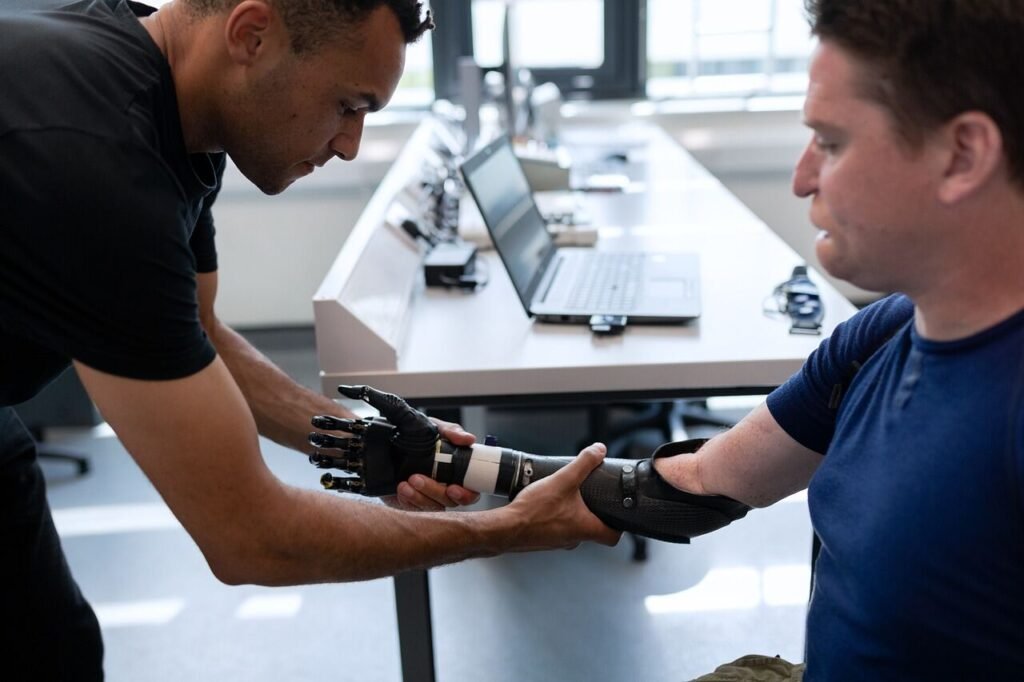
Recovery after limb loss does not stop once the wound heals or the prosthetic is fitted. Muscles and nerves continue to change over time. If they are neglected, weakness and atrophy can return. EMS provides a way to keep the muscles engaged for months and even years, ensuring that the progress made in the early stages is never lost.
Maintaining Muscle Tone Over the Years
When a prosthetic is worn daily, not all muscles are used equally. Some may stay strong, while others quietly weaken. EMS fills this gap by stimulating every targeted muscle, even those that are less active in everyday movements. This helps the residual limb stay firm, toned, and ready to support prosthetic use at all times.
Preventing Overuse Injuries
Without balance, the non-affected side of the body often takes on extra work. This can lead to fatigue, joint strain, and injuries that make life harder. By keeping the residual muscles strong, EMS reduces the need to overcompensate. This balance protects the body as a whole, ensuring long-term comfort and mobility.
Keeping Nerve Signals Strong
Myoelectric prosthetics rely on clean signals from the muscles. If those signals fade, the prosthetic becomes harder to control. EMS ensures that these signals remain strong by keeping the nerves and muscles active together. Over time, this means smoother, more precise control of the prosthetic — not just today but years into the future.
Reducing Phantom Pain in the Long Run
Phantom sensations may never completely go away, but their intensity can often be reduced. Long-term EMS provides continuous feedback to the brain, reminding it that the residual limb is still active. Patients who continue with EMS as part of their routine often report less frequent and less intense phantom pain, which improves overall quality of life.
Supporting Independence at Every Stage of Life
Needs change as life changes. A student may later become a working professional, or an older adult may focus more on comfort than performance. EMS can adapt to all of these stages. The settings can be adjusted for strength, endurance, relaxation, or circulation, making it a flexible tool that grows with the patient. This adaptability ensures that independence is not just achieved but sustained throughout life.
Creating a Sustainable Routine
Long-term EMS does not have to mean long daily sessions. Many patients find success with two or three sessions a week, each lasting 20 to 30 minutes. These can be done while reading, relaxing, or watching television. By keeping the schedule simple and sustainable, EMS becomes less of a chore and more of a natural habit. Over time, this habit becomes one of the quiet strengths behind lifelong recovery.
Conclusion
Muscle atrophy is one of the biggest challenges after limb loss. It weakens the body, slows recovery, and makes prosthetic training harder. But with Electrical Muscle Stimulation, this challenge does not have to define the journey.
EMS keeps muscles alive, builds strength, supports circulation, reduces phantom pain, and prepares patients for prosthetic use. More than that, it offers comfort, hope, and confidence during a time when many feel uncertain. It is a tool that works in the background, quietly ensuring that progress is never lost.
At RoboBionics, we believe every amputee deserves the chance to recover faster, live stronger, and feel independent again. EMS is one of the ways we make this possible. By combining advanced technology with care and accessibility, we help patients not only protect their muscles but also protect their future.
Life after limb loss is not about limits — it is about finding new ways to grow. With EMS, every contraction is a step forward, every session is progress, and every day is proof that recovery is possible. The role of EMS is clear: it is not just about reducing muscle atrophy, it is about restoring strength, confidence, and dignity to every amputee’s journey.



